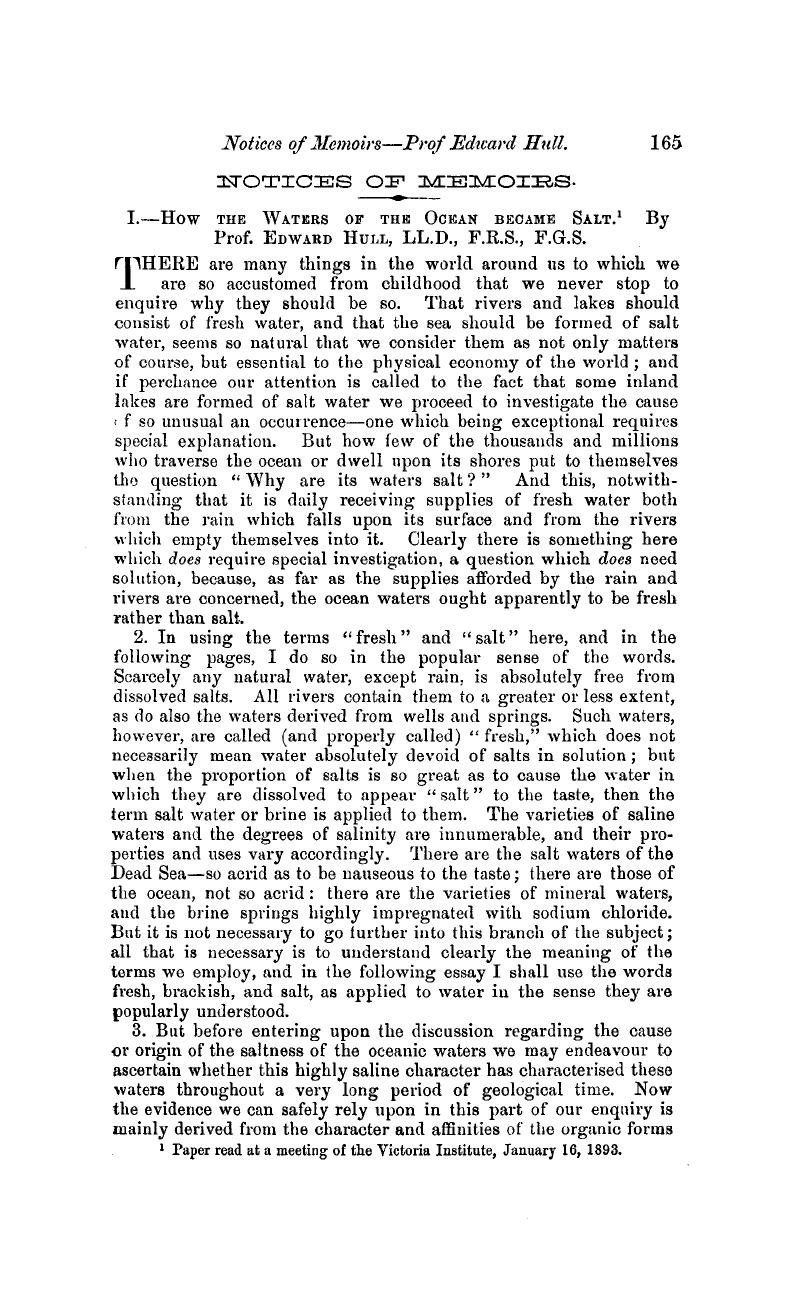No CrossRef data available.
Article contents
Notices of Memoirs
Published online by Cambridge University Press: 01 May 2009
Abstract

- Type
- Notices of Memoirs
- Information
- Copyright
- Copyright © Cambridge University Press 1893
References
page 165 note 1 Paper read at a meeting of the Victoria Institute, January 16, 1893.
page 167 note 1 Dana states that in the State of New York the salt is made from strong brine by sinking wells varying from 150 to 340 feet in depth. It takes from 35 to 45 gallons of this water to make a bushel of salt, whereas it takes 350 gallons of sea water for the same result.
page 167 note 2 “Chemical and Geological Essays”, p. 104.Google Scholar
page 168 note 1 Phil. Trans, civ. 303, et stq.Google Scholar
page 168 note 2 Watt's Diet. Chem., vol v. 1019.Google Scholar
page 169 note 1 Of the former method Dr. Sterry Hunt may he considered the chief exponent, and in order that I may not unintentionally misrepresent his views I will give them here in nearly his own words. Referring to that period in the physical history of our globe in which it may be presumed to have been in a molten state surrounded by an atmosphere and an envelope of vapour of water, he says:— “There would be the conversion of all the carbonates, chlorides and sulphates into silicates, and the separation of the carbon, chlorine and surphur in the form of acid gases which, with nitrogen, vapour of water, and a probable excess of oxygen could form the dense primaeval atmosphere. The resulting fused mass would contain all the bases as silicates, and must have resembled (when consolidated ?) certain furnace slags or volcanic glasses. The atmosphere charged with acid gases which surrounded this primitive rock must have been of great density. Under the pressure of a high barometric column condensation could take place at a temperature much above the present boiling point of water, and the depressed portions of the half-cooled crust would be flooded with a highly heated solution of hydrochloric and sulphuric acids, whose action in decomposing the silicates can easily be understood. The formation of the chlorides and sulphates of the various bases and the separation of silica would go on until the affinities of the acids were satisfied, and there would be a separation of silica taking the form of quartz, and the production of sea-water holding in solution, besides the chlorides and the sulphates of sodium, calcium, and magnesium, salts of aluminium and other metallic bases. The atmosphere being thus deprived of its volatile chlorine and sulphur compounds, would gradually approximate to that of our own time, but would differ in the greater amount of carbonic acid gas”. “Chemical and Geological Essays”, p. 40 (1875).Google Scholar
page 172 note 1 This process of evaporation and supply by rivers is accurately described in the Book of Ecclesiastes i, 7.


